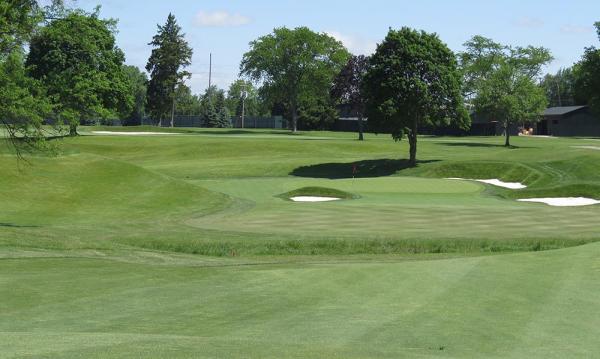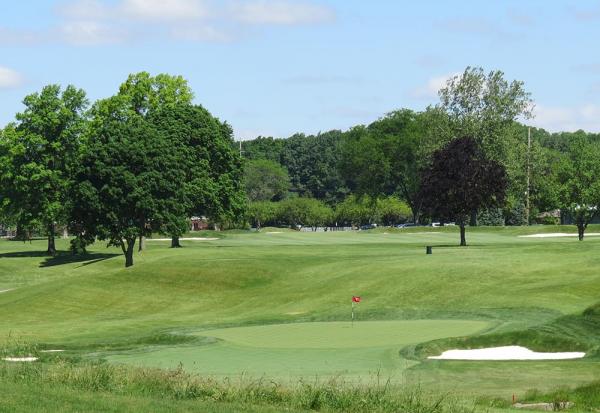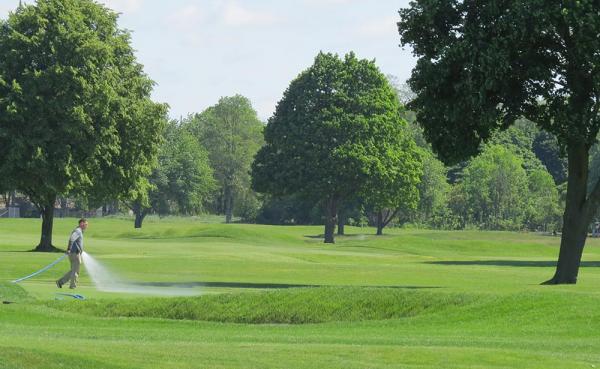
Call it a bunker renovation on steroids.
 That bunker project eventually transformed into a restoration of four Ross holes lost over time to previous renovation projects, reworking all the bunkers on the course, adding new tees and reclaiming the former glory of this Donald Ross classic in Toledo, Ohio, that has been the site of four U.S. Opens and two PGA Championships.
That bunker project eventually transformed into a restoration of four Ross holes lost over time to previous renovation projects, reworking all the bunkers on the course, adding new tees and reclaiming the former glory of this Donald Ross classic in Toledo, Ohio, that has been the site of four U.S. Opens and two PGA Championships.The foundation for this groundbreaking trip back in time was laid more than two years ago when architect Andrew Green walked the course with then-superintendent Chad Mark and members of the club as they conducted their due diligence in the search for an architect to draft a master plan.
On their own, those newer holes were fine - if they had been part of a golf course built in the 1970s, but they didn't fit in a 1916 design.
"It started as a bunker project. I could tell it had been worked on previously. I was blown away by Ross's use of the ground, but the newer holes stood out as different from the rest of the course," Green said. "The fine fescue faces, the wind, it just wasn't a good place for wispy fescue. It was a problem for maintenance and playability, lost balls, pace of play. They needed something to reinvigorate the place."
Changes to reclaim the glory days of Ross included reworking Nos. 2, 4, 5 and 8. The first is a replica of the second hold at Inverness that Ross built in 1916, while 4 is a recreation of the original No. 7, 5 is a replica of the original No. 13 and No. 8 is patterned after the original 6th hole, according to Green.
"I really respect Ross's work," Green said. "In all my time doing this, and that's about 20 years, you hear numerous things about the courses he did. Did he really do this or that, or was it just a whistlestop tour and they just call it a Ross course?
"The places like Inverness where you know he was on the ground and spent time, he did a marvelous job. He was a genius at fitting holes into the ground he had and being creative to build good golf holes. He had a great eye for utilizing the ground. Each piece of ground was utilized in unique ways, and there was a tremendous amount of variety in his designs.
"All the old guys were good. They didn't need a bulldozer to bail them out."
Green's plan included expanding the course onto some available land, so even though the layout isn't exactly the way Ross drew it up 102 years ago, it keeps alive his intent while also stretching the course to more than 7,500 yards to keep relevant in today's game. It also put the course, that will host the U.S. Junior Amateur in 2019 and the Solheim Cup in 2021, back in the spotlight.
If there is anyone who knows about preparing for and staging big events, it's Inverness superintendent John Zimmers, who came to the Toledo classic last April after nearly two decades at Oakmont Country Club near Pittsburgh.

Although getting back on the radar screen for big events is nice, it was not the intent of the renovation work, says Zimmers, who took over when Mark left last year for Muirfield Village in Dublin, Ohio.
"More than anything, this really is about everyday member play," Zimmers said. "We want them to have something they can be proud of."
While Inverness has a bright future, it also has a proud past.
Inverness is where Brit Ted Ray, in 1920, became the oldest U.S. Open champion at age 43, and it's where Billy Burke needed 72 playoff holes to beat George Von Elm by a single stroke in the 1931 championship. A grandfather clock in the clubhouse was gifted to the club's members in 1920 from U.S. Open participants as a display of gratitude for allowing them to use the clubhouse, which, until then was not permitted.
That is the era Green wanted to recapture.
"I play a lot of dirt golf and hit shots during different segments of construction to see what makes sense," Green said. "I used things that in my best guess Ross would have used in making the course come to life.
"I'm my own harshest critic. I want the golfer to step back into the same feel of the 1920 and 1931 U.S. Open. I think we did that. We created some variety around the greens and through the rest of the course. That's what we focused on. The natural flow and rhythm is back to where it should be."

